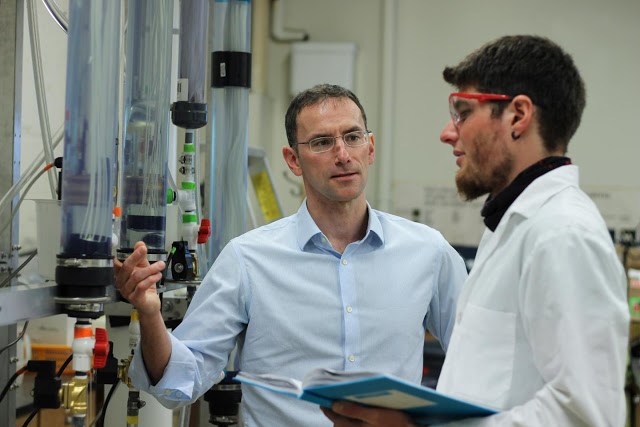

| Online: | |
| Visits: | |
| Stories: |

| Story Views | |
| Now: | |
| Last Hour: | |
| Last 24 Hours: | |
| Total: | |
New Invention Uses Bacteria and Gravity to Purify Water
The system consists of tanks of fibre membranes that catch and hold contaminants–dirt, organic particles, bacteria and viruses–while letting water filter through. A community of beneficial bacteria, or biofilm, functions as the second line of defence, working in concert to break down pollutants.
This is UBC civil engineering professor Pierre Bérubé (left) and his graduate student Lukas Dössegger.
Credit: Clare Kiernan/University of British Columbia
Membrane water treatment is not new, but Bérubé says the modifications developed by his team, described recently in Water Research, produce an even more effective solution.
“Our system is the first to use gravity to scour and remove captured contaminants, which otherwise accumulate and clog the membrane. It’s low-maintenance and as efficient as conventional approaches that need chemicals and complex mechanical systems to keep the membranes clean,” said Bérubé.
West Vancouver was chosen for pilot testing because of its proximity, but the eventual goal is to install similar systems for communities where clean drinking water is hard to come by.
“Access to clean drinking water is a constant challenge for millions of people around the world. Our goal is to provide a model for low-cost, effective water treatment for communities, and to help locals help themselves as they build, operate and even expand their water treatment plants,” said Bérubé.
Lou Bosshart
Source: http://www.ineffableisland.com/2017/04/new-invention-uses-bacteria-and-gravity.html


